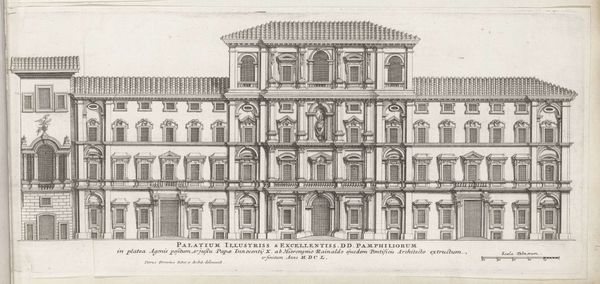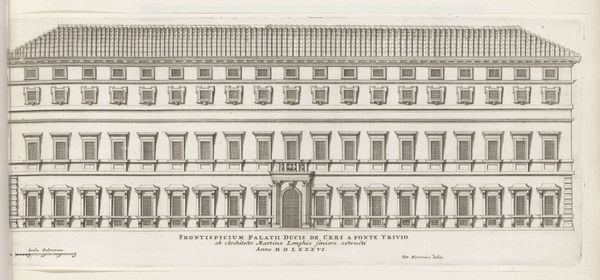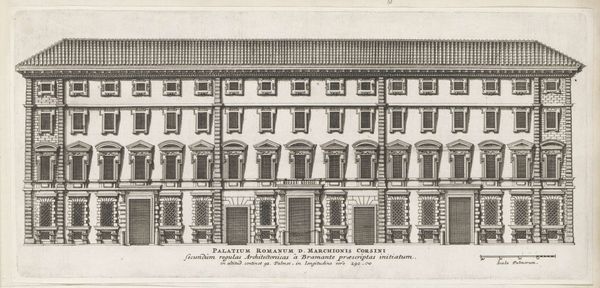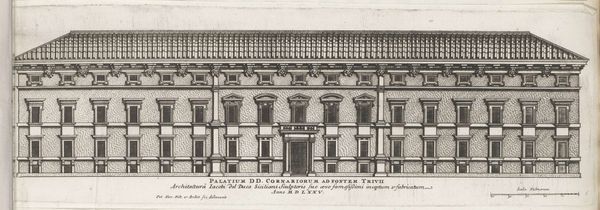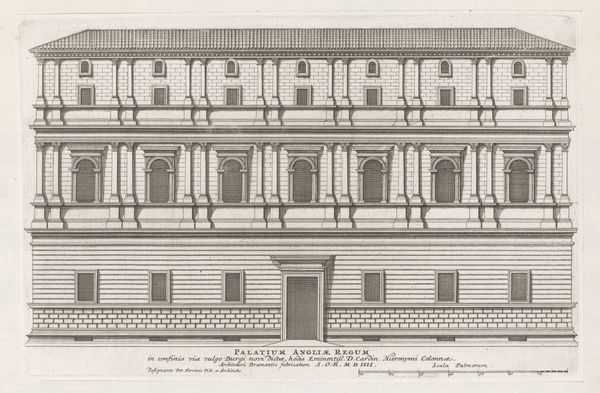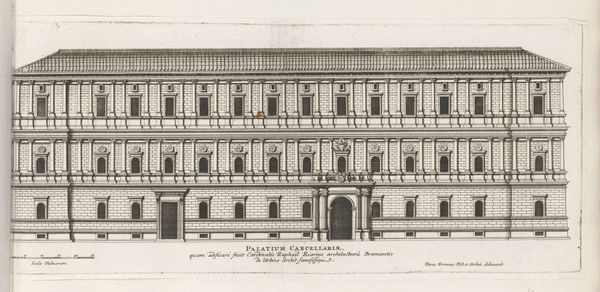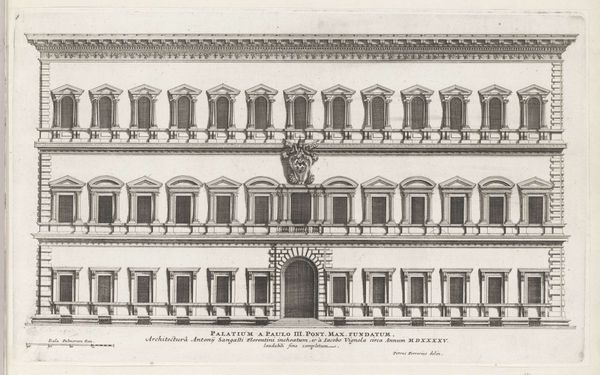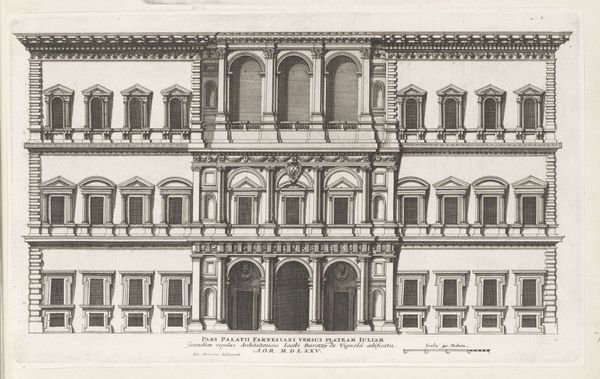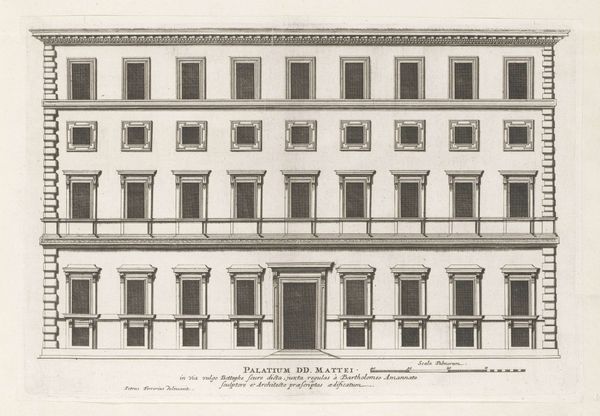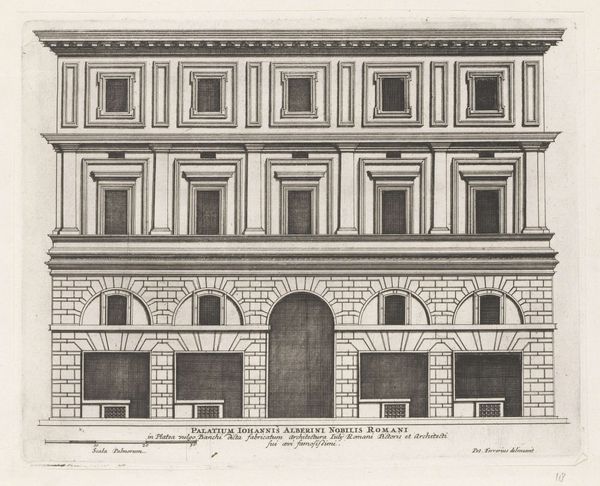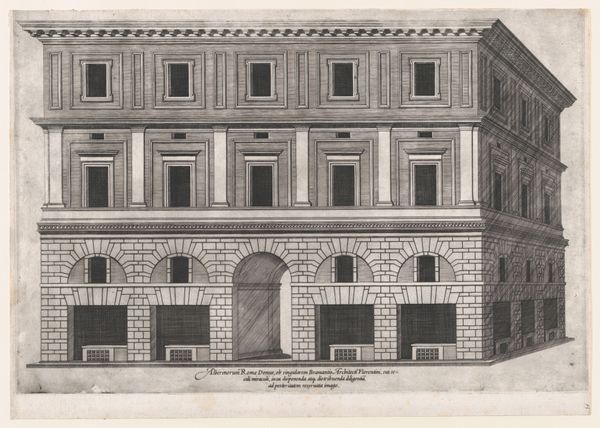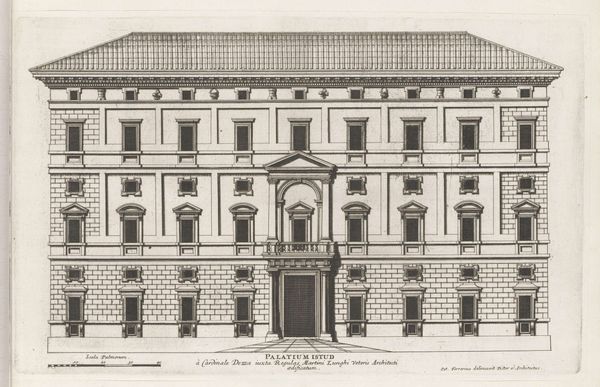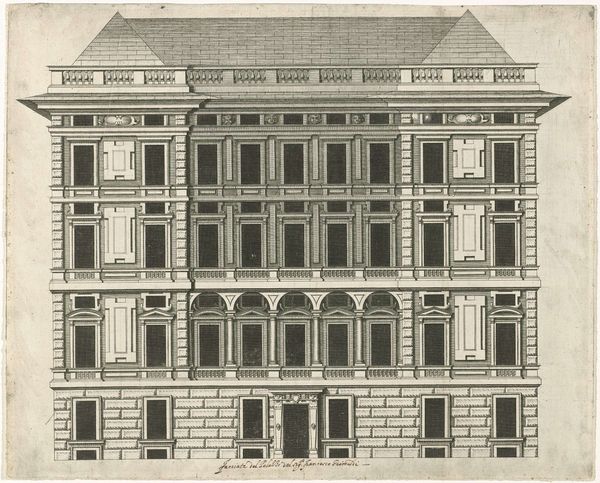
drawing, print, etching, paper, engraving, architecture
#
drawing
#
baroque
# print
#
etching
#
classical-realism
#
perspective
#
paper
#
line
#
cityscape
#
engraving
#
architecture
Dimensions: height 204 mm, width 420 mm
Copyright: Rijks Museum: Open Domain
Editor: This print, "Palazzo Vidoni Caffarelli te Rome," by Giovanni Battista Falda, dates back to 1655. It's remarkably detailed, all done with line and engraving! It gives such a precise elevation view. What stories do you see within these classical lines? Curator: Well, it's interesting how architecture becomes a form of cultural memory here. The Palazzo itself is a symbol of power and order, recalling the classical ideals that Rome sought to revive during the Baroque period. Do you notice how the rhythmic repetition of windows and arches almost hypnotizes us? Editor: I do, yes! It's very measured. Does this relentless repetition have any particular significance? Curator: Think about what a building like this *represents*. Beyond mere shelter, it signifies stability, permanence, and the enduring legacy of its patrons. Each carefully rendered detail – the pilasters, the cornices – contributes to this narrative. Editor: So, it's less about individual creativity and more about embodying an established ideal? Curator: Precisely. It is about placing oneself in a historical continuum. The clean lines and symmetry communicate a sense of reason and control. What emotional response does the Palazzo evoke in you? Editor: Knowing all this, it now feels less austere and more… intentional? I can see the story behind the architectural choices. Curator: Yes, understanding the language of its symbolism helps decode this visual rhetoric. Editor: I see so much more now than just lines on paper. Thanks for bringing out all of that richness and meaning! Curator: My pleasure; that's the fascinating thing about these enduring symbols. They continue to resonate.
Comments
No comments
Be the first to comment and join the conversation on the ultimate creative platform.
